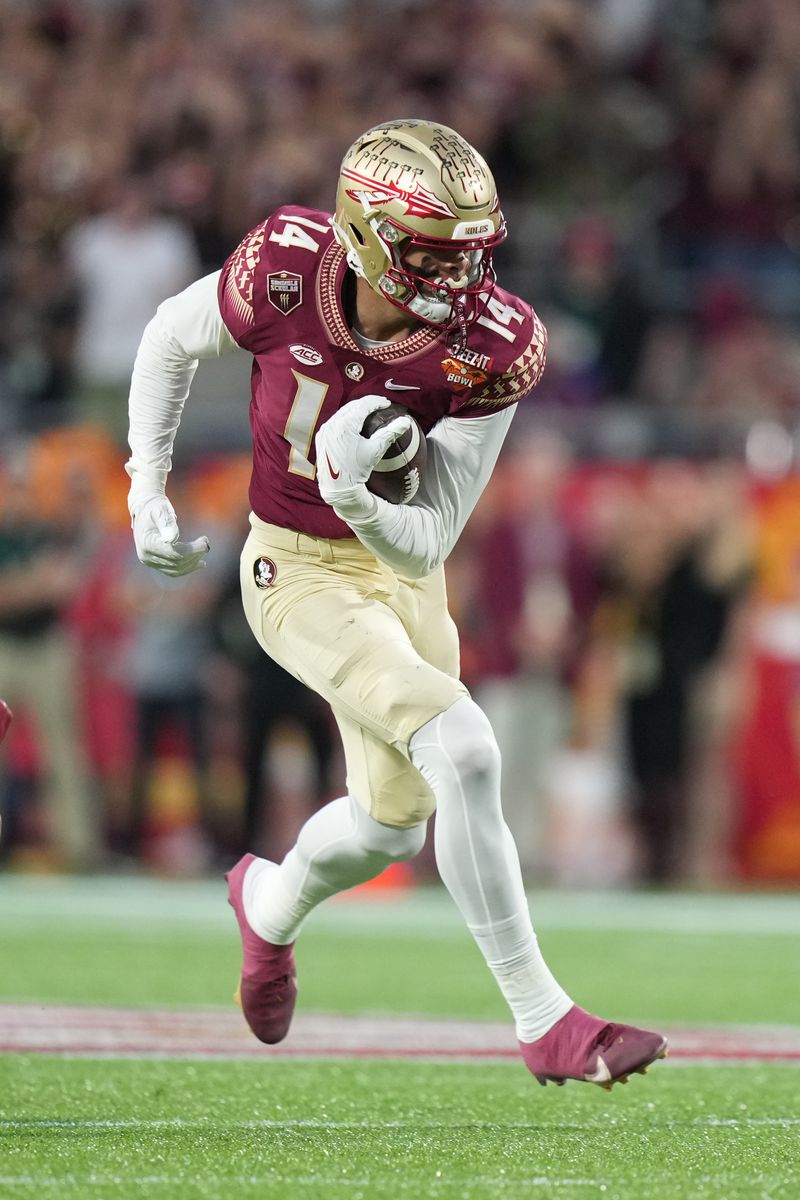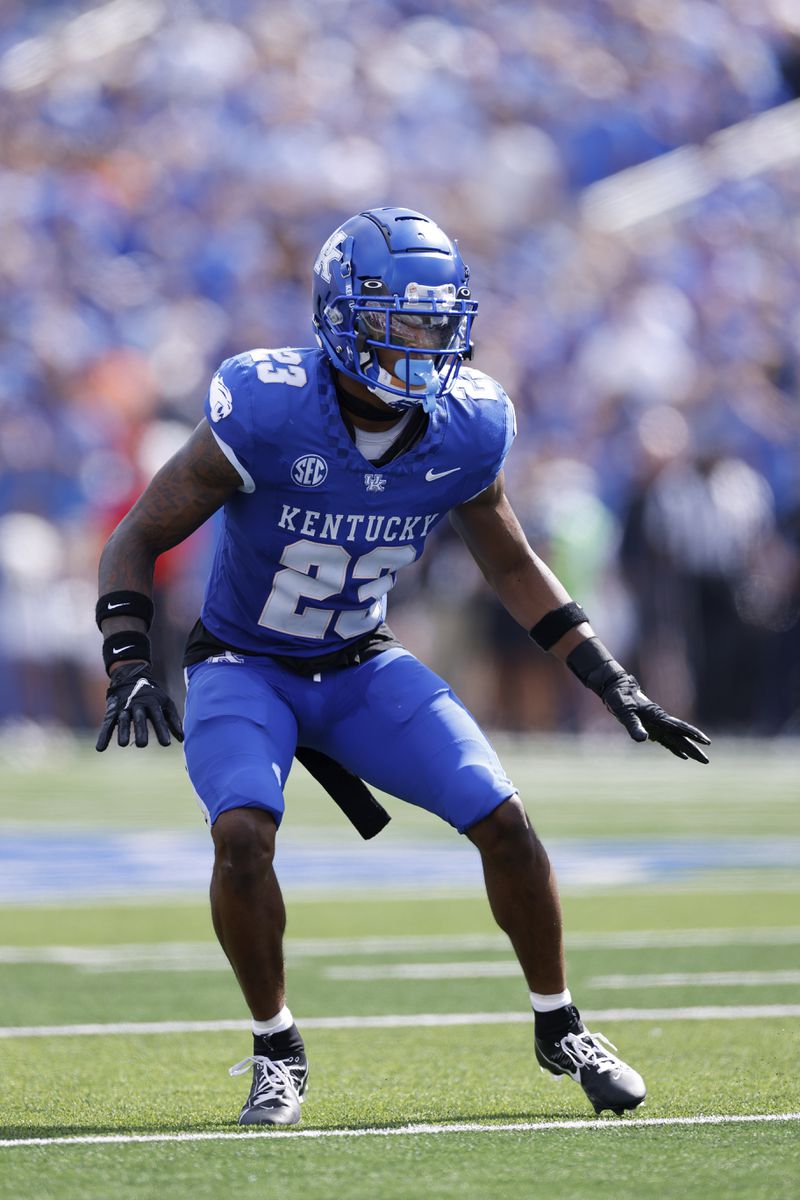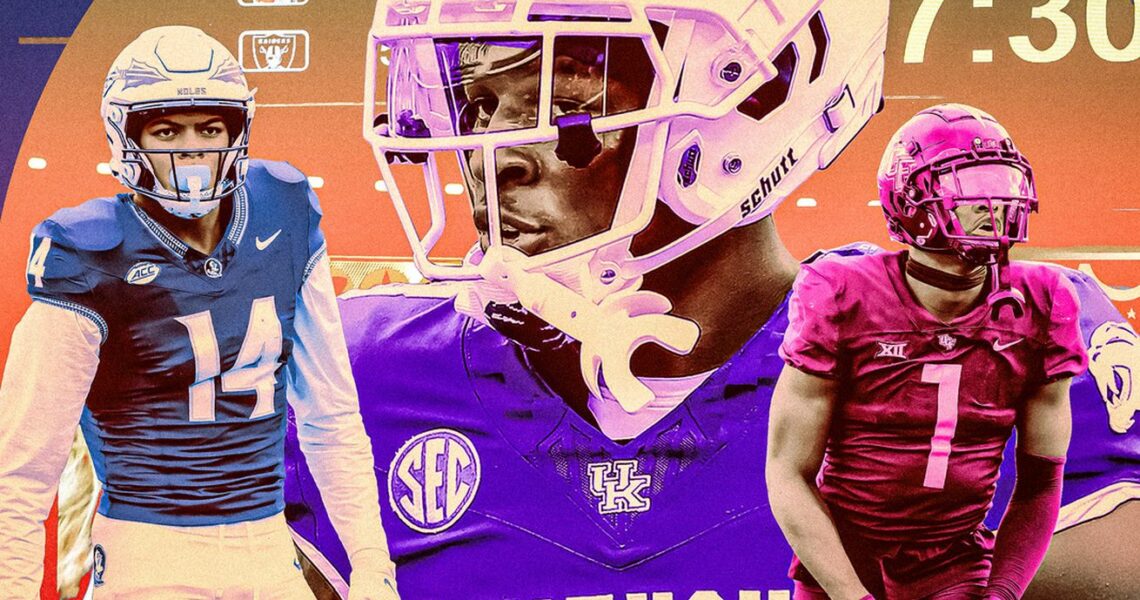
Finding a Day 3 prospect as immediately productive as last season’s breakout rookie sensation might sound impossible, but don’t sleep on these prospects who could be a steal in the 2024 draft.
Puka Nacua should allow NFL general managers to dream, to believe that every Day 3 pick could turn into one of the top players at his position and shatter records as a rookie. Sure, most late-round picks never pan out, and even fewer make a legitimate impact right away. And almost none do what Nacua did last season as a fifth-round pick for the Los Angeles Rams—catching 105 passes for 1,486 yards and six touchdowns (with another 181 receiving yards and a touchdown in the postseason) and earning a second-team All-Pro nod. Nacua was one of 17 offensive players drafted on Day 3 (and the only wide receiver) to play more than 800 snaps as a Day 3 rookie in the last 10 years.
So maybe teams won’t land the next Nacua, but you know they’re going to try (no matter how dangerous that trap may be). While odds are no Day 3 pick will have a Nacua-esque impact as a rookie, the 2024 class will still have its diamonds in the rough. Here are six potential late-round picks who could follow in Nacua’s footsteps and exceed expectations right away.
Javon Baker, WR, UCF
Baker is exactly the kind of project teams will be eager to bet on in the later rounds. Despite lacking polish as a route runner and true deep speed, Baker is such a natural playmaker. He’s an aggressive, physical player, which shows up in every aspect of his game. He runs angry, whether he has the ball in his hands or not, and his effort as a blocker is among the best in this receiver class. Where he’s at his best, however, is winning down the football field. Baker’s average depth of target (17.1) was the third-highest of any FBS wide receiver with 75 or more targets in 2023, and he ranked first among the same group of wideouts in yards per reception. He creates constant separation down the field; he is a big play waiting to happen.
javon baker pic.twitter.com/rgNDnzbIRJ
— Austin Gayle (@austingayle_) April 22, 2024
The concern with Baker is that he’s still learning the receiver position after playing just two full-time years of college football at UCF after transferring from Alabama. If he’s going to go from beating up Big 12 corners to carving out a lasting role in the NFL, Baker is going to have to commit to learning the nuances of the position, especially as a route runner. And he doesn’t have elite tools to lean on. Everything is going to have to be earned for Baker at the next level, but that’s been the case for him everywhere he’s been. I have no doubt he’ll bring his lunch pail and hard hat to the NFL regardless of where he’s drafted.

Photo by Peter Joneleit/Icon Sportswire via Getty Images
Johnny Wilson, WR, Florida State
Wilson is almost too big. The 6-foot-6, 231-pounder could be viewed as a tight end by some teams because of his outlier size, and he just doesn’t have the short-area quickness to snap off routes and steam out of breaks like shorter and lighter wideouts. Wilson also doesn’t always play big. Smaller and more physical cornerbacks can bully him at the line of scrimmage and at the catch point. And even when cornerbacks aren’t hanging off of him, Wilson’s college tape is loaded with drops. Wilson’s career drop rate is nearly 13 percent, per Pro Football Focus, which would rank outside the top-250 FBS wide receivers in 2023. He has also struggled with injuries, missing multiple games during his junior year of high school, both of his years at Arizona State, and most recently in his final season at Florida State. And it could be hard to make an NFL roster because he offers little to no special-teams value; he played just six special-teams snaps in his four-year college career.
Sorry, I know. That probably didn’t sell you on Wilson being the next Nacua! Why he could outplay a later draft slot is because in spite of those limitations, he is a very smooth, loose athlete with long strides and good enough speed to threaten cornerbacks vertically. His combination of height, weight, and arm length could make him a nightmare to defend in jump-ball situations, and while he isn’t breaking any defenders’ ankles after the catch, he’s still a load to bring down when he’s moving at full speed. Wilson could thrive early in a limited role where he either runs a lot of vertical, one-cut routes at outside receiver, or if he transitions to tight end to run seams, crossers, posts, and corners. He’s a Devin Funchess-Darren Waller hybrid with a narrow shot of finding a long-term role in the NFL, but if he is able to carve one out in the right situation, Wilson could be quite the difference-maker.
MarShawn Lloyd, RB, USC
Teams fall in love with running backs like Lloyd every single year. A transfer from South Carolina, Lloyd was sensational in his only full season with USC in 2023, racking up 820 yards and nine touchdowns on just 116 carries (7.1 yards per carry average). Per PFF, Lloyd’s elusive rating, which is a composite score that includes forced missed tackles and yards after contact, was third-best of any FBS running back with 100 or more carries in 2023. The 5-9, 220-pounder is a tackle-breaking machine with eye-popping dynamism and burst. He can start and stop on a dime, accelerate through contact, make defenders miss in a phone booth, and can bounce in and out of trouble. His unique explosiveness and compact frame are tailor-made for a change-of-pace role in the NFL, where he’s asked to bring juice off the bench.
I believe Marshawn Lloyd’s game will translate very well to next level pic.twitter.com/OAtlAgVMqp
— Daniel Jeremiah (@MoveTheSticks) April 1, 2024
What could prevent Lloyd from reaching his maximum potential in the NFL is injuries. He missed games in each of his four years in college, and he suffered a torn ACL in his first fall camp with the Gamecocks as a true freshman in 2020. He’s obviously a tough, high-effort player, but availability is oftentimes the best ability at the next level, especially for late-round selections. Lloyd also needs more experience in passing situations, both as a blocker and as a pass catcher. He finished his college career with just 34 receptions for 452 yards and two touchdown catches.
Will Shipley, RB, Clemson
Shipley is the smaller, shifty pass-catching back teams should covet on Day 3. A former five-star recruit with three years of starter-level experience at Clemson, Shipley caught 85 passes for 602 yards and two touchdowns in his college career, and rushed for more than 700 yards in each season with the Tigers. While he isn’t quite as bouncy or explosive as Lloyd, Shipley is a creative runner who can slip by defenders in tight spaces and outrun tacklers on sharp angles with his unique acceleration. His vision behind the line of scrimmage and in the open field is also a key strength to his game; he is constantly making the right decisions to avoid traffic and run to space.
Similarly to Lloyd, injuries are going to push Shipley down draft boards. Shipley missed a handful of games over the course of his career at Clemson and then had to be carted off for a non-contact knee injury during the Tigers’ bowl game against Kentucky in December. However, that injury didn’t prevent him from putting on a show at his pro day in March. Even if his long speed isn’t game-breaking, his explosiveness and short-area quickness are both more than good enough for him to carve out a third-down role in the NFL.

Photo by Joe Robbins/Icon Sportswire via Getty Images
Andru Phillips, CB, Kentucky
I have a soft spot for small cornerbacks. I probably shouldn’t, given how hard it is to make it as an outside cornerback in the NFL with below-average height, weight, and arm length, but I can’t help myself.
Enter Phillips, a 5-11, 190-pound corner who is a liability against bigger receivers, struggles to make plays on the football with well-placed passes, and lacks elite long speed to consistently stay in phase with faster receivers down the field. Because of his size limitations, odds are Phillips’s best long-term role in the NFL is to move into the slot on a team that plays a heavy zone scheme. But Kentucky asked him to play outside cornerback and constantly press at the line in man coverage concepts for a reason.
Phillips is physical. He’s strong, aggressive, and has phenomenal explosiveness and acceleration. He can win routes right at the snap with how quickly he can get his hands on receivers and affect the route. And though he isn’t a perfect tackler, he is a willing one. He’ll come flying down to make a tackle or take on a block whenever necessary. His energy and tenacity are infectious. He’s also experienced—with two years of starting experience at Kentucky and more than 300 career special-teams snaps. His size limitations will likely prevent him from ever being a true shutdown cornerback, but his path to playing time in the league is extremely wide given his inside-outside versatility and relentless demeanor. Phillips is simply one of those guys every team in the NFL should want in the locker room, which will go a long way toward him going from rotational depth piece to full-time starter on defense.
Sione Vaki, Utah
No late-round steals or gems list is complete without Vaki. He’s small, slow, and it’s unclear exactly what position he should play in the NFL. But I don’t care. The kid is a ballplayer. Vaki started at safety in each of his last two seasons, rushed for 317 yards on 42 carries (7.6 YPC) in 2023 , and racked up nearly 250 career special-teams snaps. He was a true three-way player for the Utes. How much does any of that matter when you run a 4.62-second 40-yard dash and lack fluidity as an athlete? Sadly, not a lot. But Vaki’s physical, high-effort style is still what NFL coaches should be looking for from every player on the roster. Maybe he won’t ever be a full-timer on offense or defense, but becoming the Nacua of special teams early in his career is right in his wheelhouse.

